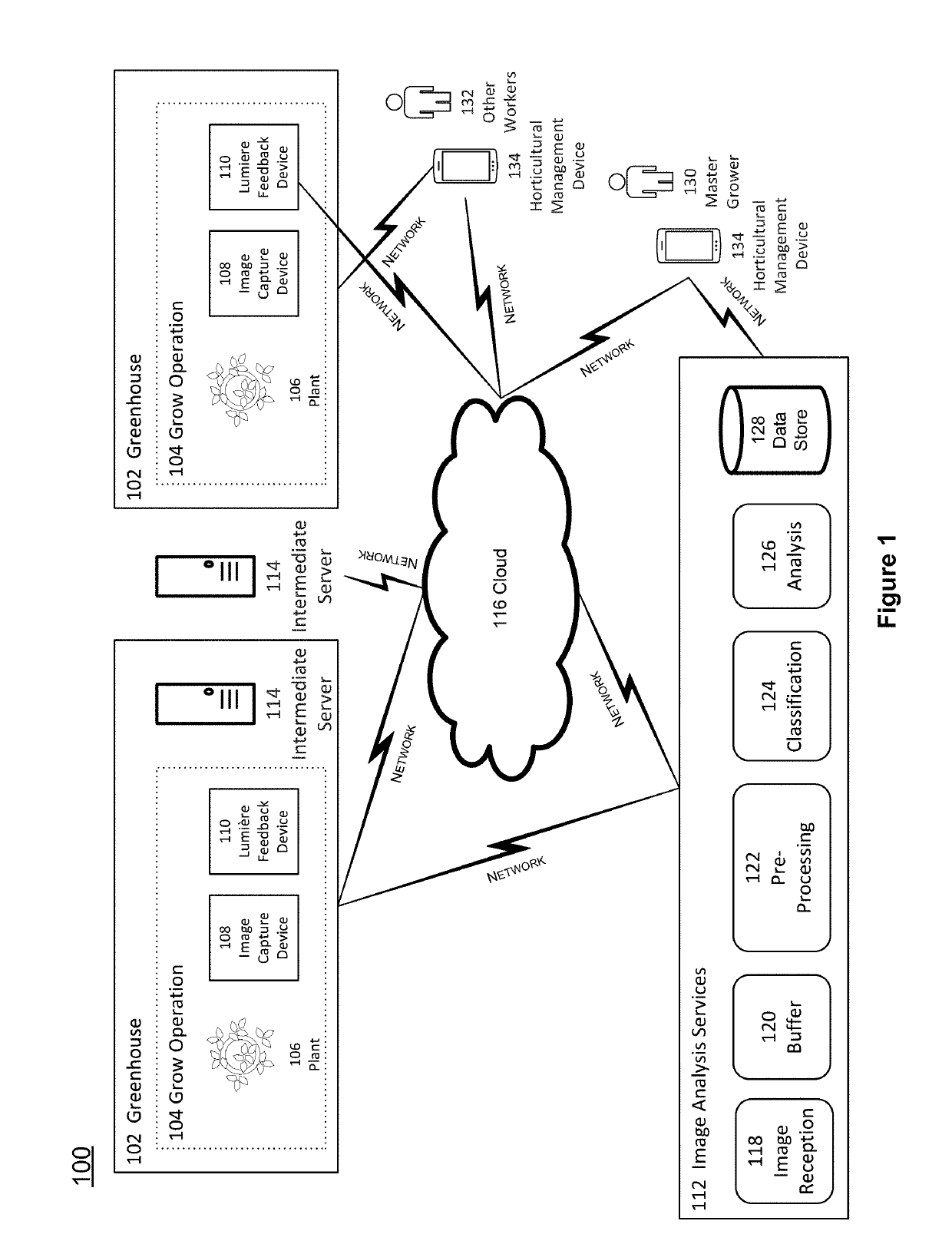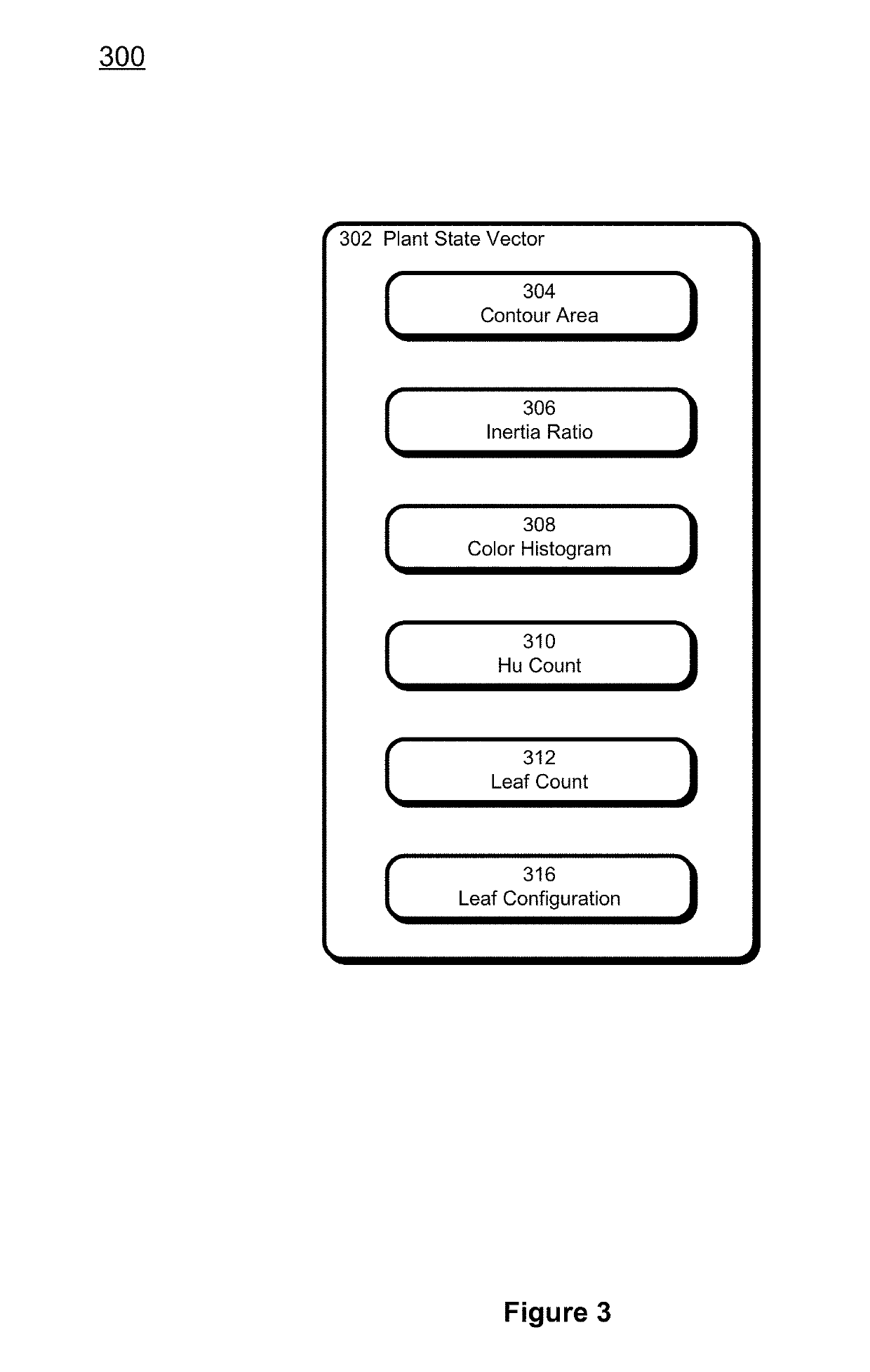Hi-fidelity computer object recognition based horticultural feedback loop
a computer object and horticultural technology, applied in the field of hi-fidelity computer object recognition based horticultural feedback loop, can solve the problems of inability to determine the course of remedial action, not being able to coordinate, and being difficult to collect information for horticultural operation in the first pla
- Summary
- Abstract
- Description
- Claims
- Application Information
AI Technical Summary
Benefits of technology
Problems solved by technology
Method used
Image
Examples
Embodiment Construction
is set forth with reference to the accompanying figures.
[0005]FIG. 1 is a top level context diagram for object recognition horticultural based feedback analysis.
[0006]FIG. 2 is a block diagram of an exemplary hardware, software and communications environment for object recognition based horticultural feedback analysis.
[0007]FIG. 3 is an exemplary plant state vector for object recognition based horticultural feedback analysis.
[0008]FIG. 4 is an exemplary flow chart of object recognition based horticultural feedback analysis.
[0009]FIG. 5 is an exemplary flow chart of identification processing for object recognition based horticultural feedback analysis.
[0010]FIG. 6 is an exemplary flow chart of static analysis via object recognition based horticultural feedback analysis.
[0011]FIG. 7 is an exemplary flow chart of sequential analysis via object recognition based horticultural feedback analysis.
DETAILED DESCRIPTION
Context of Object Recognition Based Horticultural Feedback Analysis
Overvie...
PUM
 Login to View More
Login to View More Abstract
Description
Claims
Application Information
 Login to View More
Login to View More - R&D
- Intellectual Property
- Life Sciences
- Materials
- Tech Scout
- Unparalleled Data Quality
- Higher Quality Content
- 60% Fewer Hallucinations
Browse by: Latest US Patents, China's latest patents, Technical Efficacy Thesaurus, Application Domain, Technology Topic, Popular Technical Reports.
© 2025 PatSnap. All rights reserved.Legal|Privacy policy|Modern Slavery Act Transparency Statement|Sitemap|About US| Contact US: help@patsnap.com



